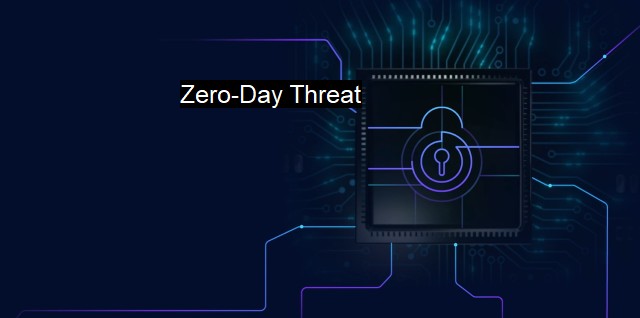What is Zero-Day Threat?
Exploring the Significance of Zero-Day Threats and Emergence of New Antivirus Technologies in Cybersecurity: A Detailed Analysis
In the context of cybersecurity and antivirus software, a "zero-day threat" signifies a new vulnerability in a software or system that has been exploited by hackers but is unknown to the software's manufacturers, or a patch or solution update is yet to be released by them. These kind of threats are particularly menacing because they often go undetected, providing the intruders a sizable window of opportunity to inflict massive damage, steal sensitive data, or place bugs before a fix is available.The label "zero-day" peels off from its definition as referring to the number of days since the vulnerability was discovered or, from another perspective, the number of days the software's developers have been privy to the vulnerability and had a quantum of opportunity to draw up countermeasures. a zero-day vulnerability means that the software's developers are on day zero of response planning - completely ignorant of the existence of the issue.
Aggressors can leverage these vulnerabilities in myriad ways, including planting malicious software like ransomware, spyware, or viruses. This can lead to a multitude of detrimental implications such as loss or pilfering of sensitive data, disruption of services, financial repercussions, and potentially permanent damage to a company’s reputation.
Typically, these vulnerabilities, once identified by the hackers, form the basis of a zero-day exploit or attack where the cyber adversaries develop a program or a code segment designed to leverage the vulnerability to infiltrate into the systems unnoticed. Due to their complexity and secretive nature, uncovering these zero-day vulnerabilities often requires considerable expertise, making the zero-day market an exclusive realm for proficient hackers and high-profile state-sponsored entities.
Zero-day vulnerabilities also attract significant interest amongst cybersecurity firms and intelligence agencies. A marketplace exists where zero-day vulnerabilities and exploits are bought and sold. Organizations often pay substantial amounts to acquire information about these vulnerabilities to pre-empt any potential exploits, hence allowing them to either patch the issue or develop defense mechanisms.
To mitigate zero-day threats, organizations encapsulate numerous strategies that frame elements of prevention, detection, and response. Regular patching and updates are the first barrier of defense against such threats. Developers frequently offer fixes for known vulnerabilities to shore up their software defenses. Deploying antivirus software and intrusion detection systems, frequently changing and strengthening passwords, limiting access rights, maintaining backups, conducting regular audits, and promoting cybersecurity awareness amongst employees can all form part of a robust protection plan.
Yet, due to the unpredictable nature of zero-day threats, these strategies aren't failsafe. Advanced techniques, such as implementing behavior-based detection algorithms also known as heuristic analysis, can add another layer of protection to counter these threats. The heuristic approach involves designing systems to study behaviors for any anomalies instead of looking for known virus or malware signatures.
Despite the challenges and constant danger posed by zero-day threats, the dynamic field of cybersecurity is continually advancing to combat these threats better. Techniques such as artificial intelligence and machine learning are being explored and gamified to facilitate faster identification of such hidden vulnerabilities and to predict attack patterns. keeping an eye towards potential vulnerabilities and sustaining an intricate, multi-faceted defense system can assist in quenching the flame of a zero-day threat before it turns into an inferno.

Zero-Day Threat FAQs
What is a zero-day threat in cybersecurity?
A zero-day threat is a type of cyber attack that exploits a vulnerability in a software or system that has not yet been discovered or patched. Hackers exploit the vulnerability before the software vendor or IT security team becomes aware of it.How do zero-day threats differ from other types of cyber attacks?
Zero-day threats are considered more dangerous than other types of cyber attacks because they take advantage of unknown vulnerabilities, making it difficult for companies to defend against them. Unlike other threats that have been previously identified, zero-day threats do not have a patch or fix yet.What can be done to protect against zero-day threats?
To protect against zero-day threats, it's important to keep your security software and systems up to date with the latest patches and updates. Regularly performing vulnerability assessments and penetration testing can help detect weaknesses that can be exploited by attackers. Additionally, companies can deploy advanced threat prevention solutions that use machine learning and artificial intelligence to detect and block new and emerging threats.What should you do if you suspect a zero-day attack has taken place?
If you suspect a zero-day attack has taken place, immediately isolate the affected system or network segment to prevent further damage. Contact your IT security team and antivirus software vendor to report the incident and determine the best course of action. It's also important to review your incident response plan and implement any necessary measures to mitigate the threat and prevent future attacks.| | A | | | B | | | C | | | D | | | E | | | F | | | G | | | H | | | I | | | J | | | K | | | L | | | M | |
| | N | | | O | | | P | | | Q | | | R | | | S | | | T | | | U | | | V | | | W | | | X | | | Y | | | Z | |
| | 1 | | | 2 | | | 3 | | | 4 | | | 7 | | | 8 | | |||||||